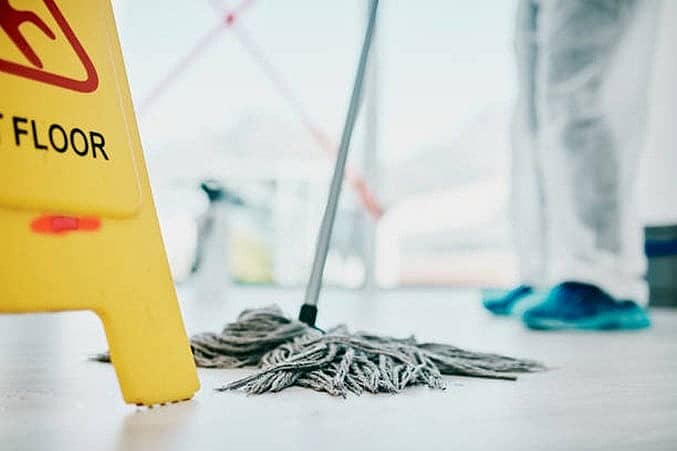This week (March 26 – April 1, 2023) is National Cleaning Week. This event, sponsored by The International Sanitary Supply Association (ISSA), celebrates the importance, value, and positive impact that cleaning has on public health, the environment, and the economy. This week also offers a perfect opportunity to recognize the importance of a clean laboratory environment and good lab housekeeping practices.
Good housekeeping is an indicator of how safely a lab operates! Good housekeeping practices can significantly reduce the risk of accidents and incidents and can prevent many types of potential safety issues. Safety problems that may result from clutter and poor housekeeping practices include increased likelihood of spills and fires; blockage of exits and safety equipment, tripping hazards, and exposure of personnel to hazardous materials.
Appendix A of the OSHA Laboratory Standard includes National Research Council (NRC) recommendations related to lab cleanliness and specifies that housekeeping practices should be included in a laboratory’s written Chemical Hygiene Plan. The importance of providing regular, formal chemical hygiene and housekeeping inspections is noted as is the need for lab personnel to promote good housekeeping practices.
Labs that are covered by the OSHA Bloodborne Pathogens Standard have specific regulatory requirements related to housekeeping. This standard states that the worksite must be maintained in a clean and sanitary condition according to a written schedule for cleaning and use of the proper methods of decontamination. The schedule and cleaning methods must be based on the type of surfaces to be cleaned, the type of soil present, and the tasks or procedures being performed in the area.
The Bloodborne Pathogens Standard also specifically requires that contaminated work surfaces be decontaminated with an appropriate disinfectant after completion of procedures; immediately or as soon as feasible when surfaces are overtly contaminated or after any spill of blood or other potentially infectious materials; and at the end of the work shift if the surface may have become contaminated since the last cleaning.
In addition to meeting these requirements, other things you can do to promote a clean lab environment include:
- Keep fume hoods, lab benches, sinks and balance areas clean and free of clutter and debris
- Clean up all spills as they happen, even if they consist of only a few drops of material
- Maintain areas around emergency equipment (e.g. eyewash/safety showers, fire extinguishers, electrical panels) free of materials that would block them
- Ensure that egress routes to exits are unobstructed and without tripping hazards
- Store chemicals in the appropriate cabinets, not in fume hoods, on lab benches, or on the floor
- Conduct routine chemical cleanouts to remove unneeded and/or expired chemicals
- Don’t store excess cardboard boxes, paper, and other combustible materials in the lab
For additional information about National Cleaning Week, or for other tips on good laboratory housekeeping practices to help keep your lab safe, please email us at [email protected].
This blog was written by Beth Graham, Safety Partners’ Director of Quality, Research, and Training.


